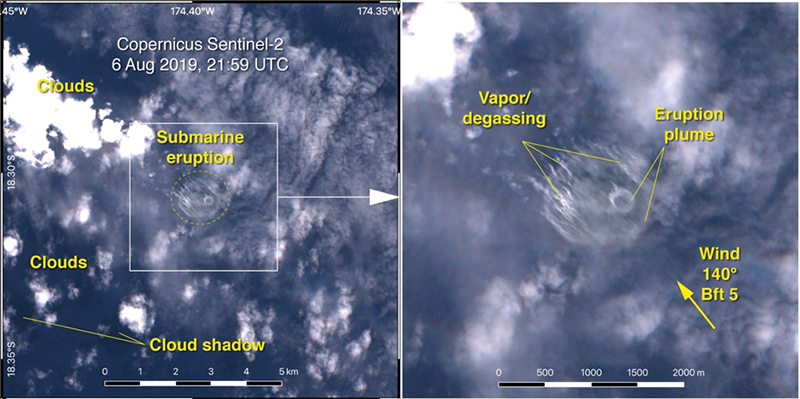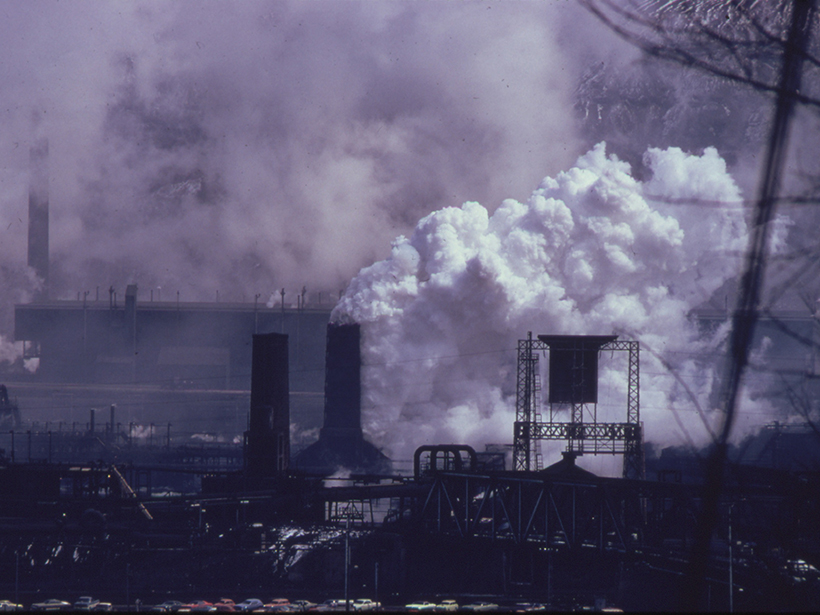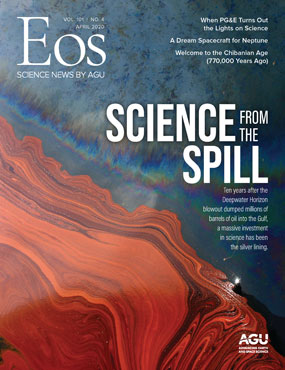EPA Suspends Enforcement of Environmental Laws Amid Coronavirus. In case you missed the news: The U.S. Environmental Protection Agency (EPA) is no longer telling companies they must adhere to environmental laws. The temporary policy has no end date, and as Rebecca Beitsch reports for The Hill, it came after calls from industries to relax environmental goals amid coronavirus uncertainty.
—Jenessa Duncombe, Staff Writer
A Decade of Science Since Deepwater Horizon.
Ten years ago, the worst oil spill in recorded history happened in the Gulf of Mexico, but from that tragedy also came enormous funding and support for science. Our April issue of Eos is dedicated to those who worked under pressure to stop the spill and who came together afterward to build huge support networks, like the Gulf Research Project and the Gulf of Mexico Research Initiative, to create a scientific movement.
—Heather Goss, Editor in Chief
Coronavirus Lockdowns Have Changed the Way Earth Moves. Yet another way COVID-19 is affecting science, but this time it’s good. The drop in traffic—by foot, car, bus, train, and truck—is giving seismologists a clearer picture of the subtle movements of the Earth. The reduction of anthropogenic seismic noise is boosting the sensitivity of instruments designed to locate earthquake aftershocks and study the crashing of ocean waves.
—Kimberly Cartier, Staff Writer
Satellite Sleuthing Detects Underwater Eruptions.

Underwater volcanoes may be out of sight, but just like their terrestrial kin, they can still be extremely hazardous, releasing plumes of gas and floating debris and sometimes triggering landslides and tsunamis. Tracking underwater eruptions is tricky because it’s difficult to monitor what we can’t readily see or reach. This piece highlights research into the (initially unknown) volcanic origins of a vast raft of floating pumice ejected during an eruption last summer in the South Pacific Ocean and discusses how combining remote sensing and other emerging methods with existing techniques like seismic monitoring could give us a better handle on these submarine hazards.
—Timothy Oleson, Science Editor
Coronavirus Concerns Force Arctic Mission to Cancel Research Flights. The reach of COVID-19 stretches everywhere, including to the R/V Polarstern, which has been locked in Arctic sea ice. The Multidisciplinary drifting Observatory for the Study of Arctic Climate (MOSAiC) expedition now faces questions about how to rotate scientists on and off the ship and keep the virus from making its way on board. Some research has already been canceled.
—Tshawna Byerly, Copy Editor

Do you need a better recommendation than that headline?
—Caryl-Sue, Managing Editor
Citation:
(2020), This week: From EPA enforcement to underwater eruptions, Eos, 101, https://doi.org/10.1029/2020EO142307. Published on 03 April 2020.
Text © 2020. AGU. CC BY-NC-ND 3.0
Except where otherwise noted, images are subject to copyright. Any reuse without express permission from the copyright owner is prohibited.


